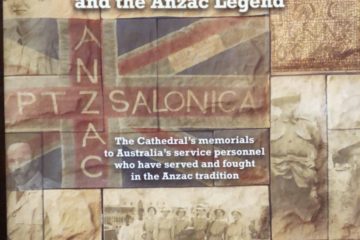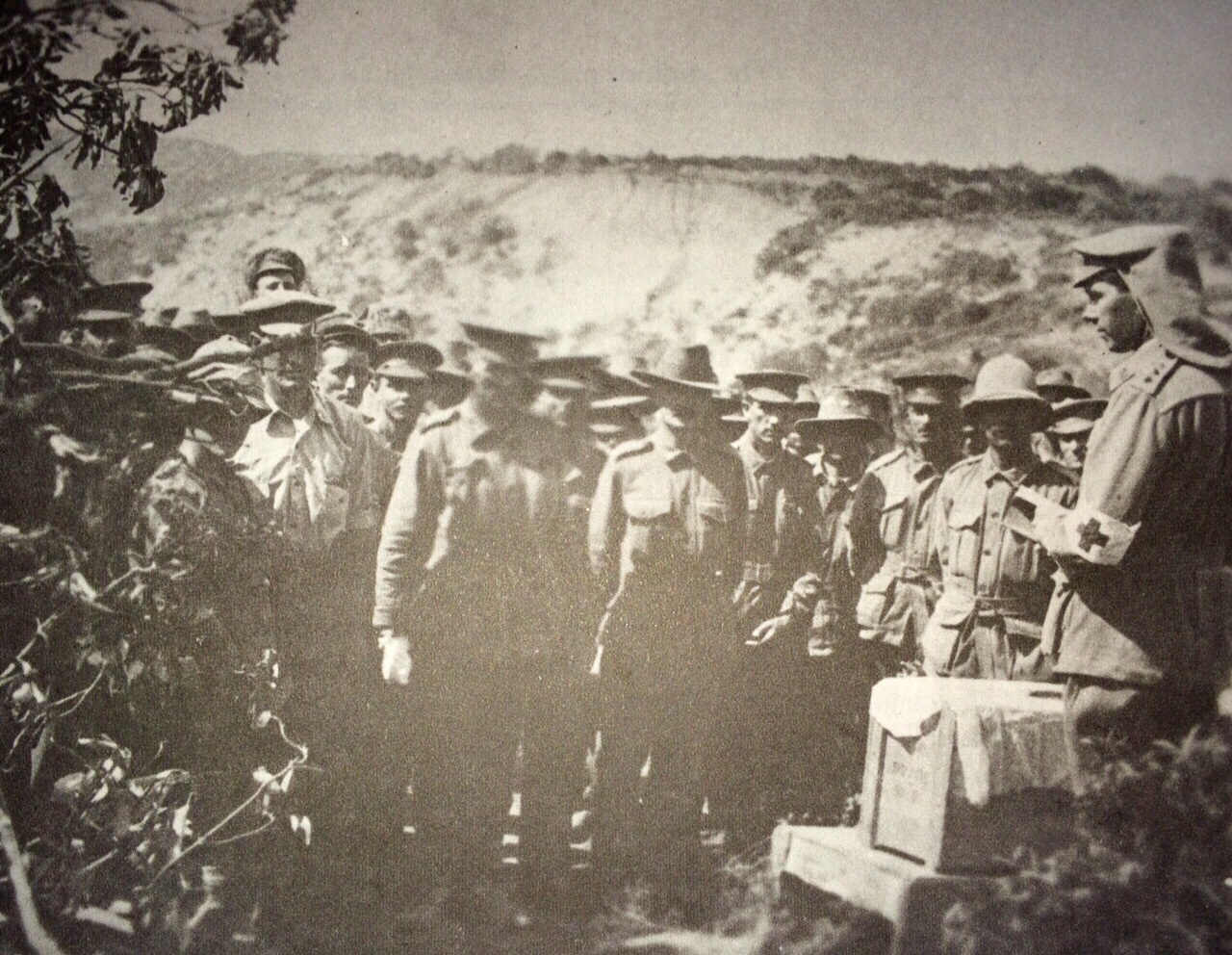Memorials to The Fallen
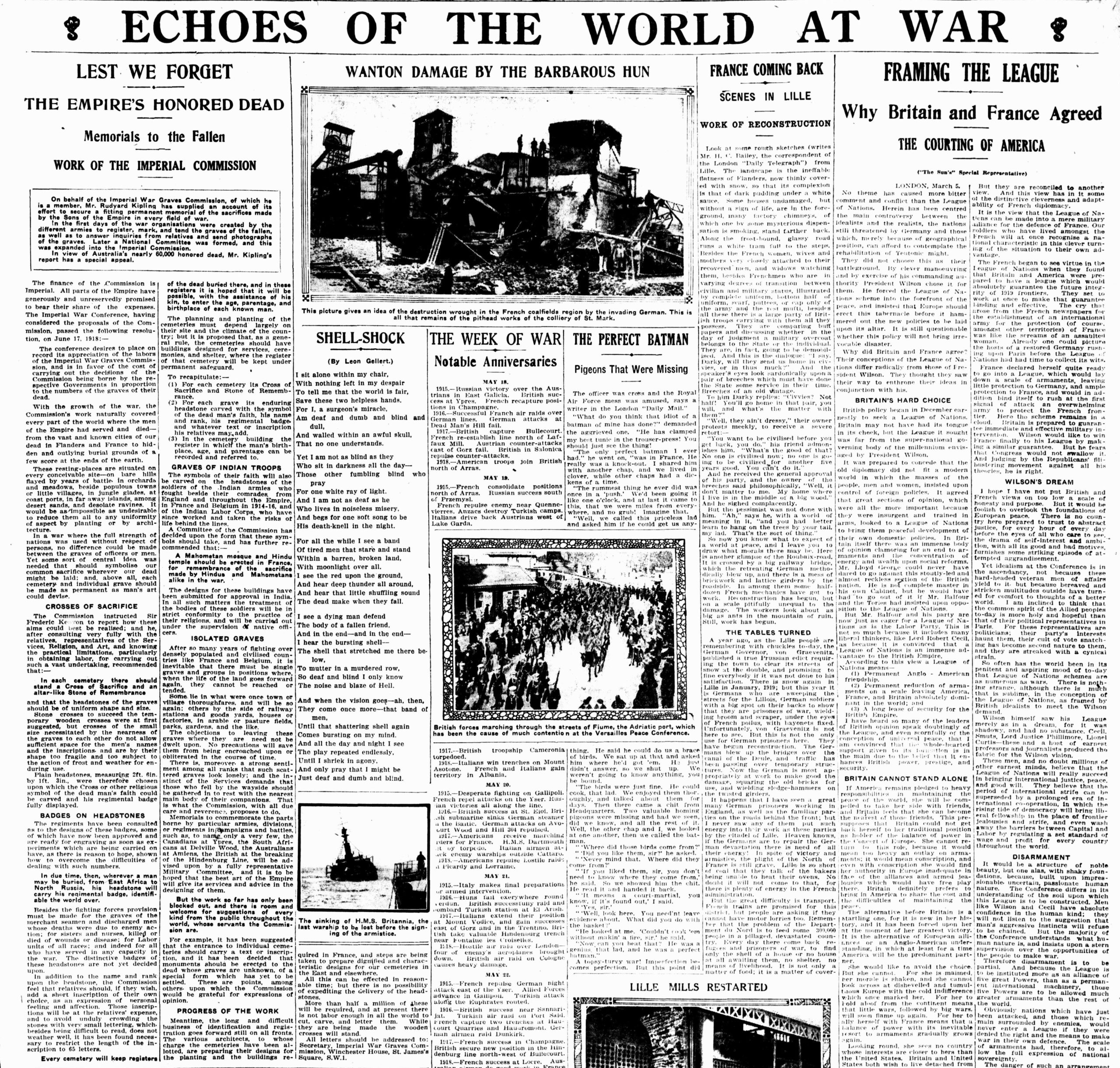
ABOVE: The front page of Sydney’s “The Sun,” newspaper of 18 May 1919.
ECHOES OF THE WORLD AT WAR
LEST WE FORGET THE EMPIRES HONOURED DEAD
Memorials to the Fallen
WORK OF THE IMPERIAL COMMISSION
ON behalf of the Imperial War Graves Commission, of which he is a member, Mr. Rudyard Kipling has supplied an account of its effort to secure a fitting permanent memorial of the sacrifices made by the Sons of the Empire in every field of war.
In the first days of the war organisations were created by the different armies to register, mark, and tend the graves of The Fallen, as well as to answer inquiries from relatives and send photographs of the graves.
Later a National Committee was formed, and this was expanded into the Imperial Commission.
In view of Australia’s nearly 60,000 honoured dead, Mr. Kipling’s report has a special appeal.
The finance of the Commission is Imperial.
All parts of the Empire have generously and unreservedly promised to bear their share of the expenses.
The Imperial War Conference, having considered the proposals of the Commission, passed the following resolution, on June 17, 1918:‒
The conference desires to place on record its appreciation of the labours of the Imperial War Graves Commission, and is in favour of the cost of carrying out the decisions of the Commission being borne by the respective Governments in proportion to the numbers of the graves of their dead.
With the growth of the war, the Commission’s work naturally covered every part of the world where the men of the Empire had served and died ‒ from the vast and known cities of our dead in Flanders and France to hidden and outlying burial grounds of a few score at the ends of the earth.
These resting-places are situated on every conceivable site ‒ on bare hills flayed by years of battle, in orchards and meadows, beside populous towns or little villages, in jungle glades, at coast ports, in faraway islands, among desert sands, and desolate ravines.
It would be as impossible as undesirable to reduce them all to any uniformity of aspect by planting or by architecture.
In a war where the full strength of nations was used without respect of persons, no difference could be made between the graves of officers or men.
Yet some sort of central idea was needed that should symbolise our common sacrifice wherever our dead might be laid; and, above all, each cemetery and individual grave should be made as permanent as man’s art could devise.
CROSSES OF SACRIFICE
The Commission instructed Sir Frederic Kenyon to report how these alms could best be realised; and he, after consulting very fully with the relatives, representatives of the Services, Religion and Art and knowing the practical limitations, particularly in obtaining labour, for carrying out such a vast undertaking, recommended that:‒
In each cemetery there should stand a Cross of Sacrifice and an altar-like Stone of Remembrance and that the headstones of the graves should be of uniform shape and size.
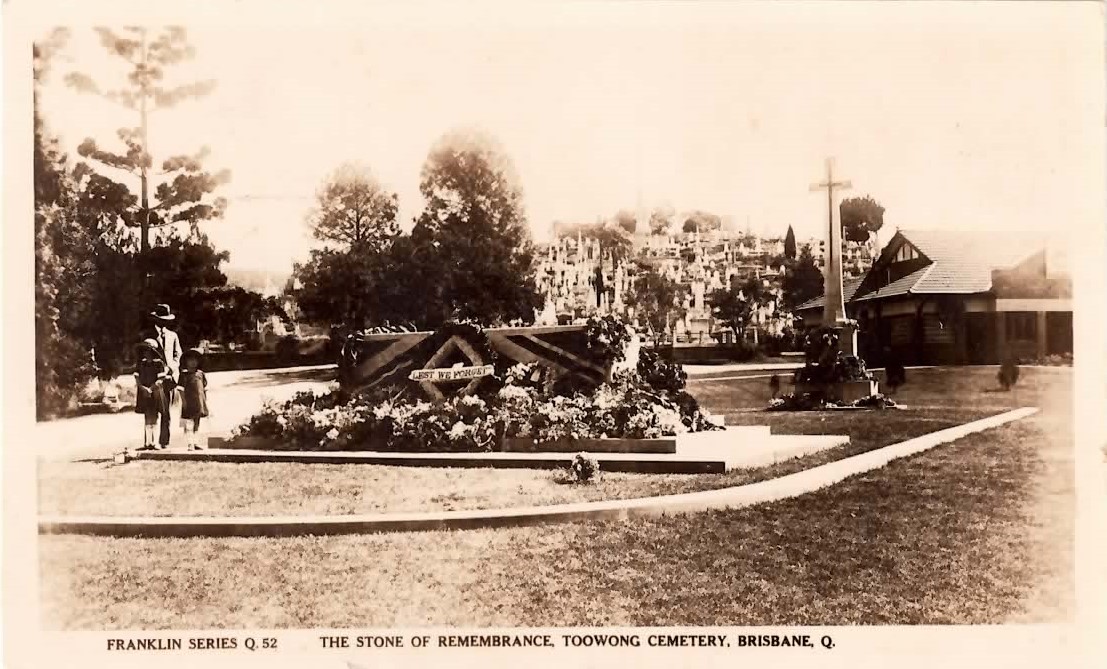
ABOVE: Canon Garland, throughout 1922 to ANZAC Day 1924 energised the Queensland State Government, in conjunction with Mayor of Brisbane, to have have built, in the entrance of Toowong Cemetery, the nation’s first ANZAC war memorials. The combination was officially unveiled and dedicated by the Australian Governor-General, Lord Forster, on ANZAC Day 1924.
Stone crosses to succeed the temporary wooden crosses were at first suggested, but crosses of the small size necessitated by the nearness of the graves to each other do not allow sufficient space for the men’s names and the inscriptions, and are by their shape too fragile and too subject to the action of frost and weather for enduring use.
Plain headstones, measuring 2ft. 6in. by 1ft. 3in., were therefore chosen upon which the Cross or other religious symbol of the dead man’s faith could be carved and his regimental badge fully displayed.
BADGES ON HEADSTONES
The regiments have been consulted as to the designs of these badges, some of which have now been approved and are ready for engraving as soon as experiments which are being carried on have, as there is reason to hope, shown how to overcome the difficulties of dealing with such numbers.
In due time, then, wherever a man may be buried, from East Africa to North Russia, his headstone will carry his regimental badge, identifiable the world over.
Besides the fighting forces, provision must be made for the graves of the merchant seamen and discharged men whose deaths were due to enemy action; for sisters and nurses killed or died of wounds or disease; for Labour units or all races; and indeed for all who have served in any capacity in the war.
The distinctive badges of these headstones are not yet decided upon. In addition to the name and rank upon the headstone, the Commission feel that relatives should, if they, wish, add a short inscription of their own choice, as an expression of personal feeling and affection.
Those inscriptions will be at the relatives’ expense and to avoid unduly crowding the stones with very small lettering, which, besides being difficult to read, does not weather well, it has been found necessary to restrict the length of the inscription to 65 letters.
Every cemetery will keep registers of the dead buried there, and in these registers it is hoped that it will be possible, with the assistance of his kin, to enter the age, parentage and birthplace of each known man.
The planning and planting of the cemeteries must depend largely on their site and the climate of the country; but it is proposed, that, as a general rule, the cemeteries should have buildings designed for services, ceremonies, and shelter, where the register of that cemetery will be kept under permanent safeguard.
To recapitulate:‒
- For each cemetery its Cross of Sacrifice and Stone of Remembrance.
- For each grave its enduring headstone carved with the symbol of the dead man’s faith, his name and rank, his regimental badge, and whatever text or inscription his relatives may, add.
- In the cemetery building the register in which the man’s birth place, age, and parentage can be recorded and referred to.
GRAVES OF INDIAN TROOPS
The symbols of their faith will also be carved on the headstones of the soldiers of the Indian armies who fought beside their comrades from England and throughout the Empire, in France and Belgium in 1914-16, and of the Indian Labour Corps, who have since worked and taken the risks of life behind the lines.
A Committee of the Commission has decided upon the form that these symbols should take, and has further recommended that:‒
A Mahometan [sic] mosque and Hindu temple should be erected in France, for remembrance of the sacrifice made by Hindus and Mahometans [sic] alike in the war.
The designs for these buildings have been submitted for approval in India.
In all such matters the treatment of the bodies of these soldiers will be in strict conformity to the practice of their religions, and will be carried out under the supervision of native officers.
ISOLATED GRAVES
After so many years of fighting over densely populated and civilised countries like France and Belgium, it is inevitable that there must be single graves and groups in positions where, when the life of the land goes forward again, they cannot be reached or tended.
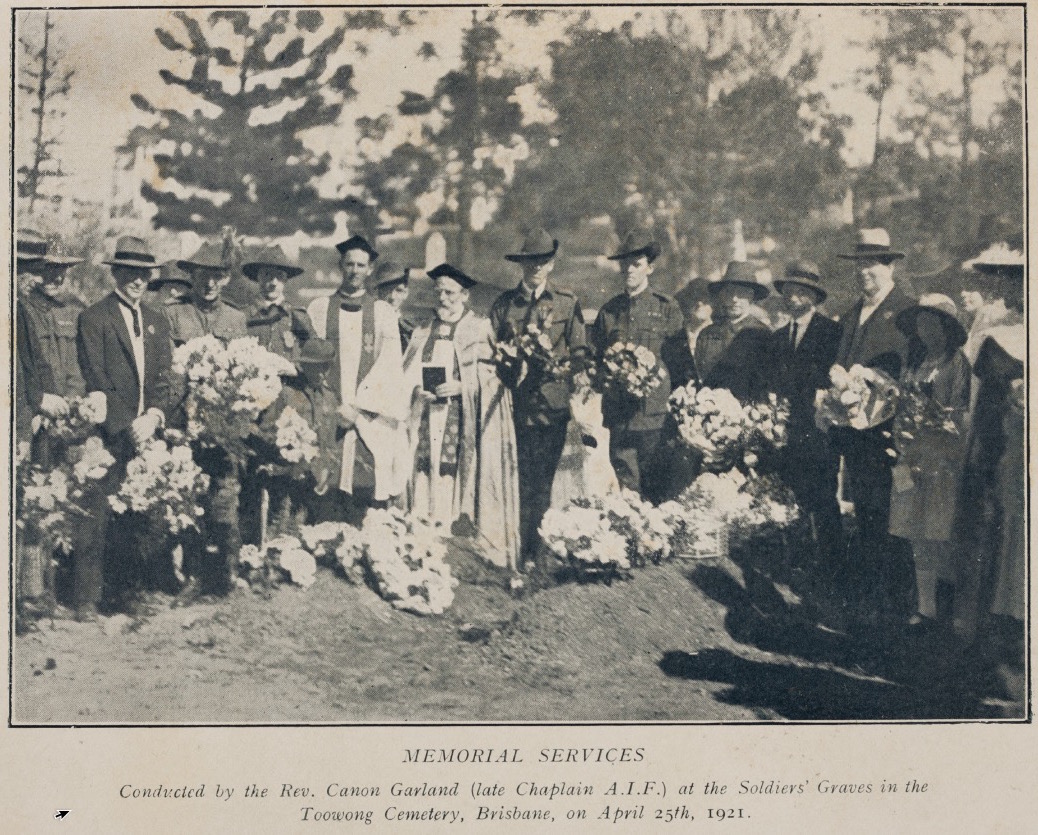
ABOVE: The scene in the entrance to Brisbane’s Toowong Cemetery, where in 1921, the Reverend Canon David Garland, conducted an ANZAC Day observance – amidst freshly-dug graves of First AIF veterans and flanked by a throng of mourners. This image appeared in the ANZAC Day Commemoration Committee of Queensland’s “ANZAC Commemoration 1921: A Brief History of the Movement – Sermons and Addresses delivered throughout Queensland,” compiled by Henry John Charles Diddams in 1922 (page 5).
Some lie in what were once town or village thoroughfares, and will be so again; others by the side of railway stations and goods yards, houses or factories, in arable or pasture fields, parks, gardens and the like.
The objections to leaving these graves where they are need not be dwelt upon.
No precautions will save them from being encroached upon or obliterated in the course of time.
There is, moreover, a strong sentiment among all ranks that such scattered graves look lonely; and the instinct of the Services’ demands that those who fell by the wayside should be gathered in to rest with the nearest main body of their companions.
That is what the Commission, with all due care and reverence, proposes to do.
Memorials to commemorate the parts borne by particular armies, divisions, or regiments in campaigns and battles, such as, to name only a very few, the Canadians at Ypres, the South Africans at Delville Wood, the Australians at Amiens, the British at the breaking of the Hindenburg Line, will be advised upon by a fully representative Military Committee, and it is to be hoped that the best art of the Empire will give its services and advice in the designing of them.
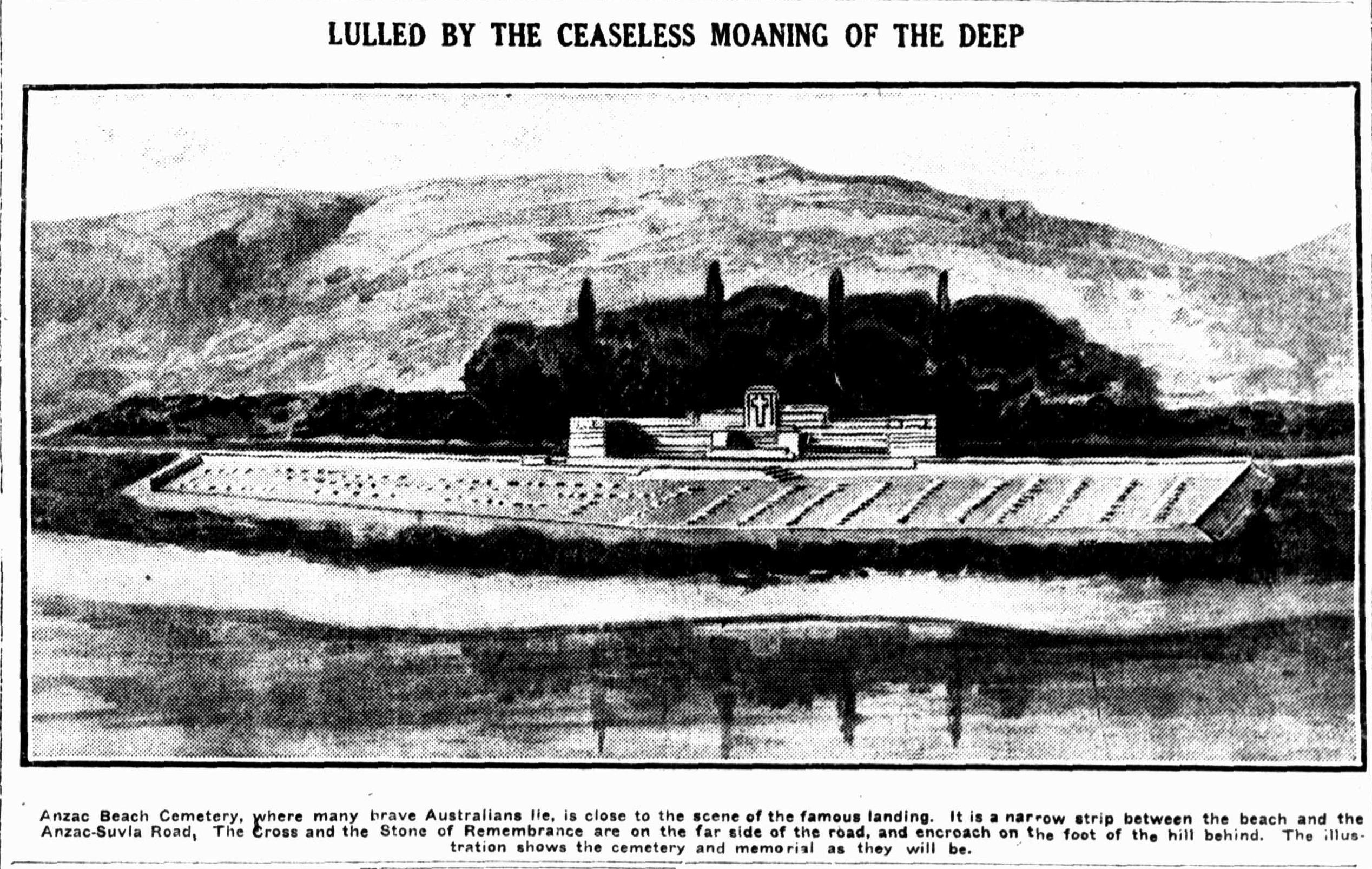
ABOVE: An artist impression of how the Australian Government, working with the Imperial War Graves Commission, imagined the monument to The Fallen of the Gallipoli landings, and the layout for their cemetery, might look like in Turkey. This image appeared on the front page of Sydney’s “The Sun” newspaper on 11 November 1920.
But the work so far has only been blocked out, and there is room and welcome for suggestions of every kind from the public throughout the world, whose servants the Commission are.
For example, it, has been suggested that the entrance to individual cemeteries should carry a text or inscription, and it has been decided that monuments should be erected to the dead whose graves are unknown, of a special form which has yet to be settled.
These are points, among others, upon which the Commission would be grateful for expressions of opinion.
PROGRESS OF THE WORK
Meantime, the long and difficult business of identification and registration goes forward still on all fronts.
The various architects, to whose charge the cemeteries have been allotted, are preparing their designs for the planting and the buildings required, in France, and steps are being taken, to prepare dignified and characteristic designs for our cemeteries in the East and elsewhere.
All this can be effected in reasonable time; but there is no possibility of expediting the delivery of the headstones.
More than half a million of these will be required, and at present there is not labour enough in all the world to cut, carve and letter them.
While they are being made the wooden-crosses will stand.
All letters should he addressed to: Secretary, Imperial War Graves Commission, Winchester House, St. James’s. Square, S.W.1.
‒ from page 13 of “The Sun” (Sydney) of 18 May 1919.

